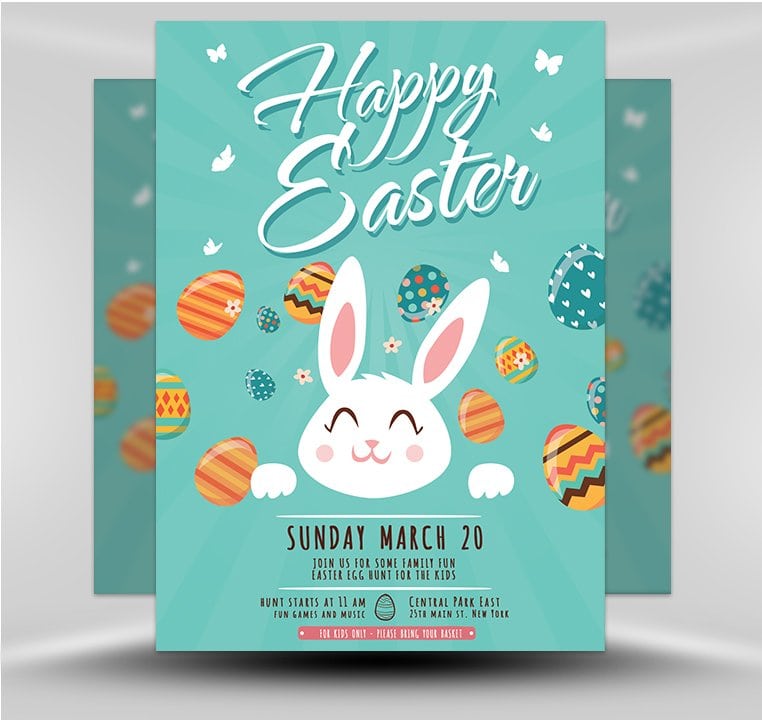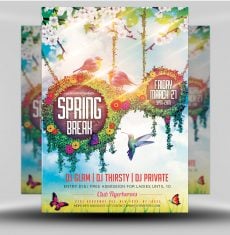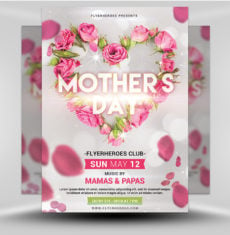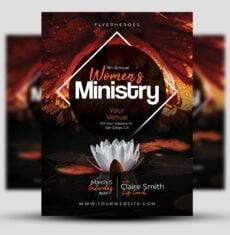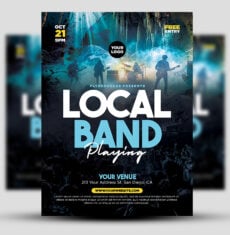Have a happy Easter gathering with our holiday flyer!
This flyer emphasizes high contrast with a color scheme of blue with orange striped eggs. The event title at the top uses an elegant script font with a drop shadow effect and is surrounded by white butterflies. The center of the flyer shows a cute cartoon rabbit surrounded by Easter eggs. Below the bunny are the event details, with enough space for all your Easter event information.
Our Happy Easter flyer can be used for any Easter event!
What Fonts Do I Need?
Similar Flyer Designs
General Information:
This flyer template is a premium Photoshop PSD flyer/poster template designed by FlyerHeroes to be used with Photoshop CS4 and higher.
Once you have purchased this flyer template, you are free to make any customizations and modifications you’d like.
You are also granted an unlimited use and 100% royalty-free license, meaning you can use this product as many times as you wish. You are free to use this product in both personal and commercial work.
You can read more about our file licenses here and our file requirements here.
Please note, stock models/photographs of people are used for demonstration purposes only and are not included in the final download. We do however include a blank placeholder layer to make using your stock photos as easy as possible.
If you have any further questions, please feel free to direct your questions to FlyerHeroes Support.

